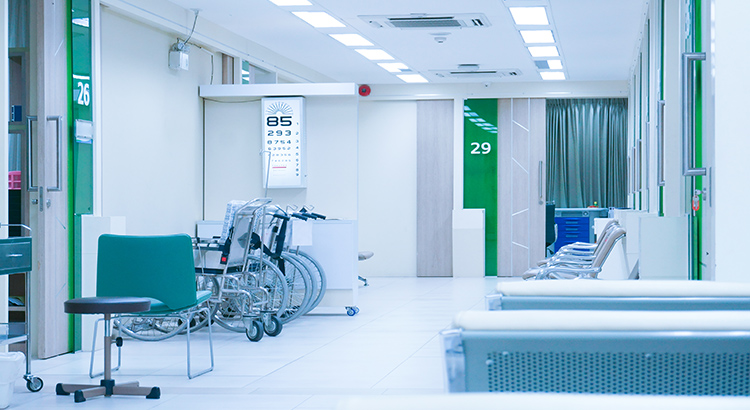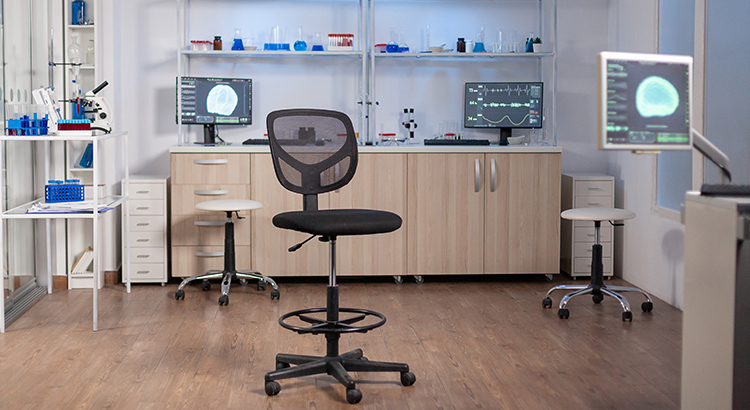Medical fit outs enhance efficiency, convenience, and overall quality of healthcare services, which is a key factor in Australia’s improvement of its healthcare system. Building practical and patient-centered medical facilities requires these customized interior designs and modifications. Well-designed medical fitouts contribute to a more welcome and pleasant environment for patients in a time when client satisfaction is of utmost importance. In the long run, this can result in better wellness because it can lower anxiety and increase sense of fulfillment.
Let’s dig deeper on how medical fitouts contribute to the improvement in the healthcare industry
ENHANCING HEALTHCARE SPACES WITH MEDICAL FITOUTS
- A Patient-Centric Approach
The focus of a patient-centric approach in medical centre fitout is to build healthcare facilities with the patient’s comfort, wellbeing, and requirements at the establishment. It acknowledges the beneficial effects a therapeutic environment can have on a patient’s experience and healing. This strategy entails designing serene, relaxing, and aesthetically beautiful settings that lessen stress and anxiety. Essential elements include private patient rooms with lots of windows, cozy furniture, and calming colour schemes.
Additionally, ensuring that all patients, especially those with mobility issues, can comfortably navigate and use healthcare services encourages inclusivity and equal access. Effective interpersonal and digital communication channels promote patient empowerment and engagement, allowing patients to take an active role in the decisions regarding their medical treatment. Overall, a patient-centric approach in medical fitouts aims to raise the standard of service provided to patients.
Additionally, speed and safety are prioritized together with patient comfort in patient-centric medical fitouts. Wait times for patients are reduced, and patient flow is enhanced due to well-designed layouts that make it easier for medical staff to complete their tasks. Patients are safeguarded from injury while receiving treatment through safety features like infection control strategies and ergonomic design characteristics.
By facilitating easy access to healthcare information and services, integrating technology solutions such as telemedicine capabilities and electronic health records further improves the patient experience. Ultimately, a patient-centric approach to medical fitouts enhances patient satisfaction while fostering a healing environment that supports greater health outcomes and wellbeing.
- Streamlining Workflow and Efficiency
By carefully organizing the layout of spaces within a healthcare facility, it is feasible to save the time and effort required to move patients, employees, and equipment between different sections. This includes designing logical pathways, decreasing congestion in high-traffic areas, and guaranteeing quick access to vital tools and supplies. Ergonomically built workspaces also help employee comfort and productivity by allowing healthcare workers to perform their duties efficiently and without undue physical strain.
Standardized processes and guidelines are essential for preserving consistency and eliminating errors. Workflow mapping aids in the identification of bottlenecks and inefficiencies, allowing for targeted modifications. Staff training ensures that everyone is familiar with established procedures, establishing an efficient and quality-care culture. Effective resource allocation ensures that persons and equipment are placed where they are most required, preventing resources from being underutilized or overburdened.
Regular performance reviews and the use of metrics allow healthcare institutions to evaluate progress, make data-driven choices, and constantly improve their procedures for maximum efficiency. Healthcare institutions can further streamline operations, reduce administrative costs, and improve communication between care providers by integrating technological solutions such as electronic health records and telemedicine capabilities.

- Flexibility and Future-Proofing
Creating flexible spaces that readily adapt to adjustments to healthcare devices, workflows, and number of patients is what flexibility in design entails. This could include reconfigurable modular furniture and partition systems, as well as adaptable infrastructure to facilitate the integration of new technology and medical devices. Flexible layouts and multipurpose sections enable healthcare providers to adjust to changes in patient demographics and healthcare delivery models more efficiently.
Future-proofing medical fit-outs entails anticipating and preparing for evolving healthcare trends. This includes developing infrastructure for telemedicine, electronic health records (EHRs), and other digital healthcare technologies. Furthermore, energy-efficient and sustainable design concepts not only save operational expenses but also conform to environmental legislation and the growing emphasis on sustainability in healthcare.
Maintaining up-to-date awareness of healthcare legislation and standards guarantees continued compliance while incorporating scalability and contingency planning helps institutions respond to unforeseen situations. Healthcare facilities may preserve their relevance, efficiency, and quality of care in an ever-changing healthcare landscape by including flexibility and future-proofing into medical fit-outs.

- Compliance and Safety Standards
Compliance with rigorous safety and regulatory standards is a non-negotiable feature of medical fitouts, assuring the safety of patients and personnel, as well as the efficient operation of healthcare facilities. Local, state, and national building codes, as well as healthcare standards, must be followed. These codes address a variety of issues, such as structural integrity, electrical and mechanical systems, and fire safety precautions. Compliance also includes zoning and occupancy standards, which ensure that the facility is located and used appropriately within set boundaries.
Also, safety requirements include infection control as a crucial element. Proper ventilation, sanitization procedures, and the use of materials that are simple to clean and disinfect are just a few of the ways that the design and construction ought to promote good infection control. Another essential aspect of compliance is making sure that accessibility is provided to everyone, including disabled individuals. As a result, people with disabilities are guaranteed equitable access to healthcare services, including those with well-designed ramps, elevators, and accessible restrooms. In general, commitment to compliance and safety requirements in healthcare fitouts not only reduces risks but also fosters a setting that supports efficient patient care and the highest standards of medical practice.
- Fostering a Positive Work Environment
For the wellbeing of medical workers and overall quality of patient care, a medical fitout must promote a healthy work atmosphere. Designing welcoming and useful spaces is necessary. The workflow of medical professionals should be facilitated by ergonomic furniture, appropriate lighting, and effective design. A relaxing break during long hours can be provided via well-designed relaxation facilities, which boosts productivity and staff happiness.
Also, building trust and fostering productive teamwork among team members requires encouraging open and cooperative communication. Medical fitout companies can foster a culture of mutual support and continuous improvement by providing areas and opportunities for personnel to exchange ideas, talk about patient cases, and offer feedback. In the long run, creating an enjoyable workplace for medical professionals is an investment in their wellbeing and the delivery of high-quality healthcare to patients.
Frequently Asked Questions
- What are the benefits of medical fit-out?
Medical offices and healthcare facilities can gain from medical fitouts in a number of ways, including:
Enhanced Patient Experience: Well-designed medical fitouts make patients feel welcome and at ease, which lowers stress and anxiety. This improves patient satisfaction and the overall experience.
Enhanced Workflow: For healthcare professionals, effective space planning and layout design enhance workflow. This improves the facility’s overall efficiency by streamlining procedures, cutting back on wait times, and reducing congestion.
Improved Safety and Infection Control: Medical fitouts place a high priority on safety and infection control measures, helping to reduce the risk of healthcare-associated infections and safeguarding the wellbeing of patients and staff.
Effective Space Utilization: Highly efficient use of space makes the most of the available square footage, minimizing wasted space and perhaps reducing operational costs.
Boosted Employee Productivity: Ergonomically built workspaces and well-organized storage options increase worker efficiency and comfort, which boosts output.
Energy Efficiency: Sustainable design principles, such as energy-efficient lighting and HVAC systems, can lower utility bills and encourage environmental responsibility.
Positive Brand Image: A well-designed and well-maintained medical facility can improve the reputation and brand image of a healthcare practice, drawing in new patients and keeping hold of existing ones.
Cost productivity: Although a medical fitout’s initial expenditure may be substantial, the long-term advantages, such as increased effectiveness, patient satisfaction, and regulatory compliance, may result in cost savings and a large return on investment.
- What does medical fitout work involve?
Medical fitout work entails designing, building, and providing a healthcare facility or medical practice to ensure that it is functional, safe, and in accordance with healthcare standards and laws. The following are the main components and steps in medical fitout work:
Assessment and Planning: An in-depth evaluation of the existing space or a new construction site is usually the first step in the process. This includes assessing the layout, infrastructure, and regulatory compliance. Based on the specific needs of the healthcare facility, a thorough strategy must be created.
Layout Design: After the evaluation, architects and designers produce a detailed design and layout that includes room arrangements, interior design components, and infrastructural requirements. This stage also takes into account patient flow, accessibility, and infection control.
Interior Furnishing: Medical fitout work entails selecting and installing furniture, cabinetry, and storage solutions that are customized to the demands of the healthcare institution. This could entail including custom-built cabinetry for medical supplies and tools.
Infection Control Procedures: To guarantee that the facility meets the highest hygiene and sanitation standards, strict infection control procedures are conducted. To avoid the transmission of illnesses, proper ventilation, hand hygiene stations, and sterilization equipment are installed.
Security Measures: This includes access control systems, surveillance cameras, and alarm systems, which are installed to protect the facility, workers, and patients.
Interior Design: Color schemes, lighting, and artwork are used to create a welcome and tranquil environment for patients and staff.
Testing and quality assurance: All systems and equipment are rigorously tested to ensure they fulfill safety and performance standards. Quality assurance checks are performed to ensure that rules and design criteria are met.
Documentation and Compliance Reporting: To demonstrate compliance with healthcare regulations and construction codes, all necessary documentation needs to be prepared, including permits and permissions from appropriate authorities.
Medical fitout work is an intensive process that ensures healthcare facilities are properly equipped to deliver high-quality patient care while adhering to regulatory regulations and safety standards. To develop a safe and efficient healthcare hospital environment, architects, designers, builders, healthcare practitioners, and regulatory agencies must collaborate.
BRANDBOY – THE BEST PARTNER IN AUSTRALIA FOR OFFICE REFURBISHMENT AND MEDICAL FITOUT PROJECTS
Through medical fit-out, businesses can create a more productive healthcare setting for both staff and patients, as well as visitors, which can improve productivity and efficiency.
Brandboy can be the ideal option if you’re looking for high-quality medical for our services in Australia. We have assisted several prominent companies in transforming spaces to improve the workplace environment and medical fitouts Sydney. Joinery, carpentry, fittings, internal and external signage, electrical and data cabling, plumbing, internal and external painting, glazing and replacements, façade, flooring, roofing, air conditioning, cleaning, maintenance, and other associated services are all available through our team.
Our services also include site audits, budget and cost analysis, council permission, thorough documentation, procurement and maintenance management, remedial work, fire and safety compliance, and other services.
If you have any questions concerning our medical fit-out and refurbishment, please contact us as soon as possible at 0451 816 788 or lars@brandboy.com.au.

